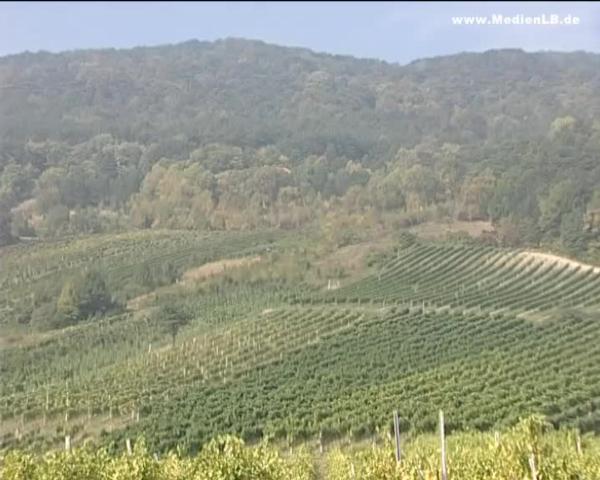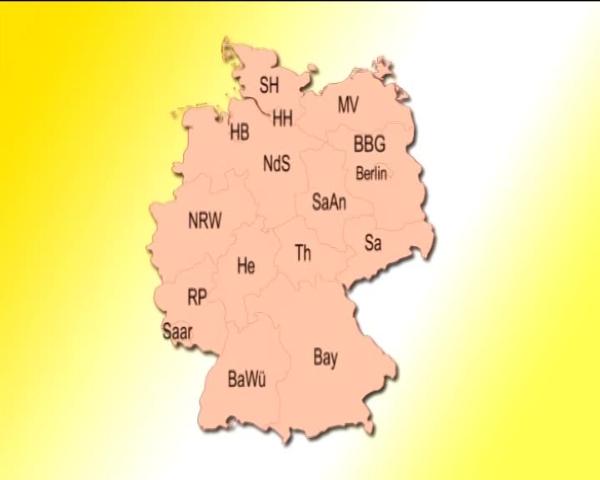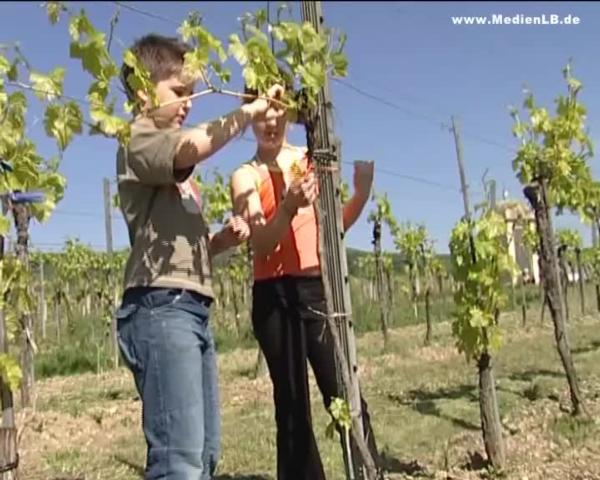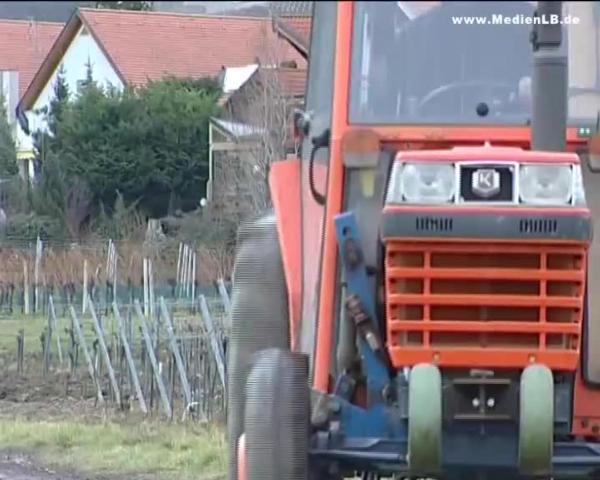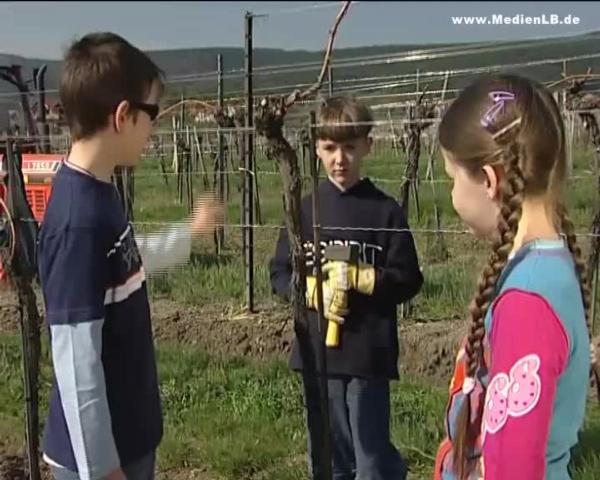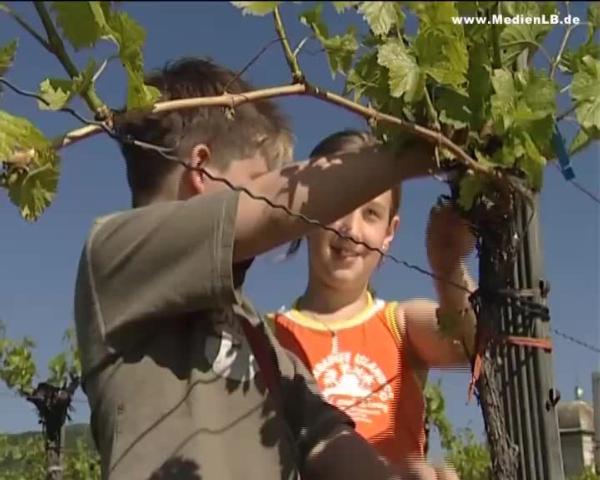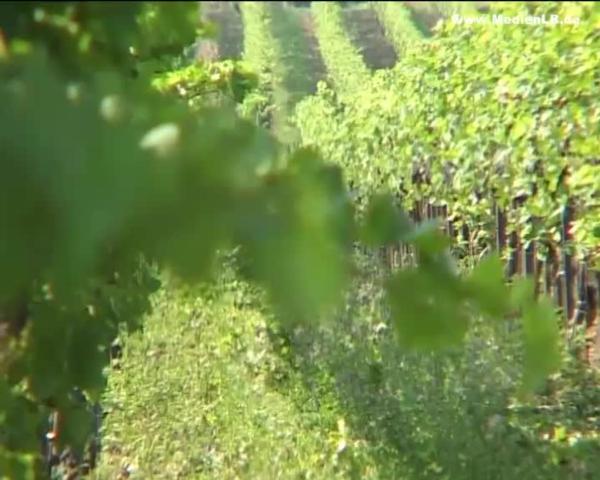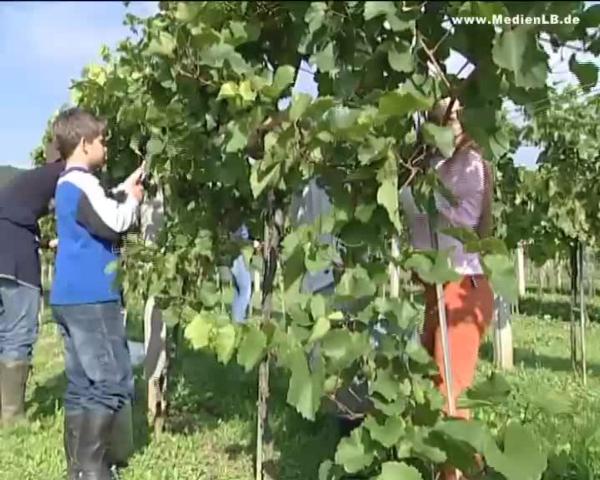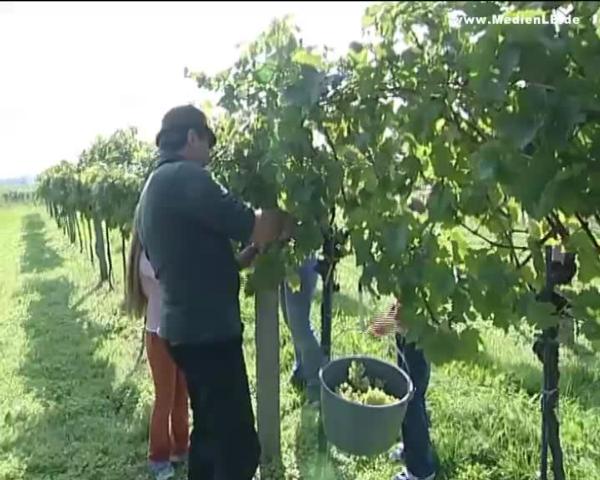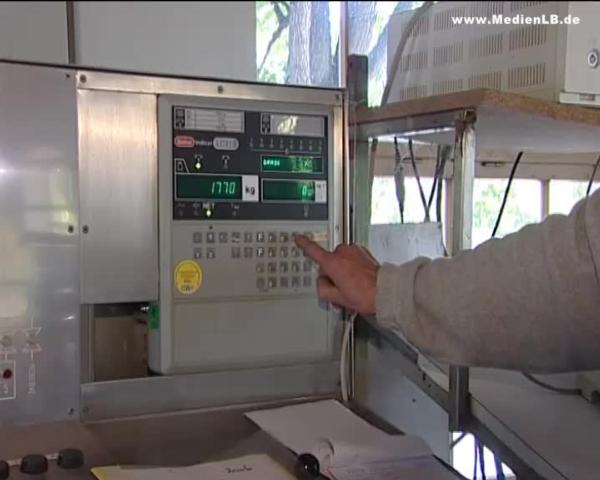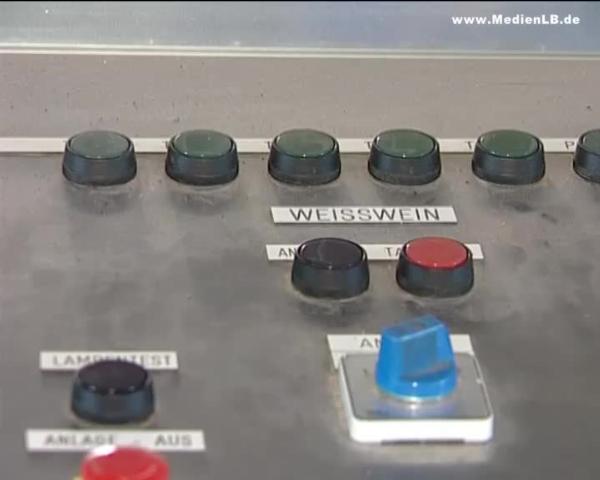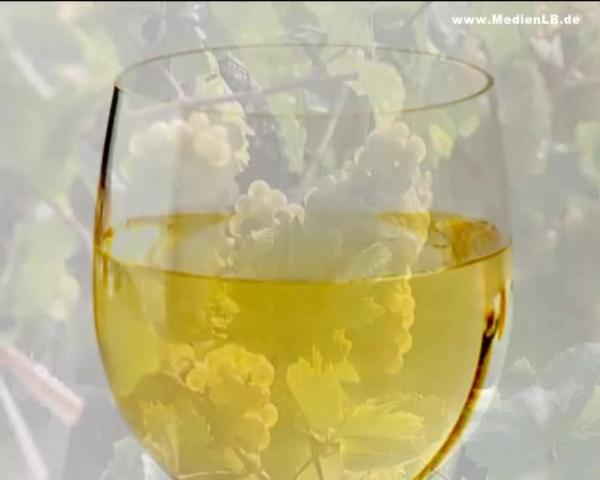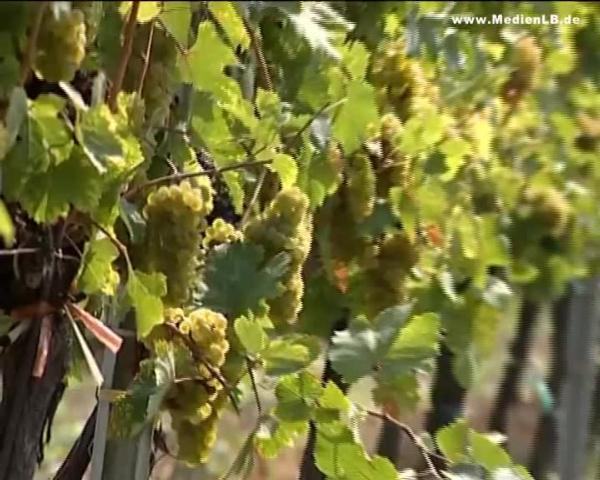Weinbau
Von der Traube zum Wein

Wine-Growing

1. Geographic Areas: Soil, Climate, Slopes, Types of Grapes 1.1 Wine growing Areas in Germany and Austria Although Germany and Austria are not among the foremost wine-growing countries in Europe, wine-growing has considerable economic importance for both states. The total wine-growing areas of Germany cover about 105.000 hectares or 1.050 square kilometres, in Austria wine is grown on about 50.000 hectares, that is 500 square kilometres. Vines need plenty of sun. That's why they are mostly grown on southern slopes and terraces. There is also viticulture in vineyards on the plains. On the Moselle, in Rhine-Hesse and the Palatinate they are called "Wingert" and in Baden, Württemberg and Franconia "Wengert". Depending on soil, solar radiation and tradition, different types of grapes are characteristic of various areas of cultivation. Since about 5000 B.C. between 8.000 and 10.000 varieties of grapes have been created from wild grapes through cultivation. Today there are several hundreds of them. The most important types of grapes in Germany are: Riesling and Müller-Thurgau for white wine and pinot noir and Dornfelder for red wine. In Austria especially the Grüne Veltliner and the Blaue Zweigelt are widespread. 2. From Grape to Wine Before the wine is bottled, it needs a lot of attention. In a wine-growing area pupils wanted to know more about it. For one year they accompanied a wine grower during his work and helped him. 2.1. December to February As Thomas explains to us, the vine consists of underground roots, the stem and the twigs, which are called grapevines. These grapevines - you can recognize them by their light colour - grew last spring. In autumn the foliage is shed and the nutrients withdraw into the stem and the roots. As can be seen clearly here by the green markings, the nutrients retire from the surface to the underground part of the vine. The first frost covers the ground. Now last year's wood must be pruned down, otherwise the vine looks neglected. January is the best time for pruning the vines. You do it with vine scissors. You can recognize the buds on the grapevines. In spring new twigs with leaves and grapes grow from these buds. However, as the wine grower doesn't want too many grapes on a vine, almost every twig is pruned down. Only these three grapevines are left by the children. On this grapevine Peter counts eight buds, then cuts it off above them. Now, that's the fruit cane. This fruit cane is then fastened in March. As it may happen that some of them are broken off, mostly also some "reserve canes" are left. But these are cut back more - down to two or three buds. These "reserve canes" are called substitute vines. In case the fruit cane doesn't grow properly, there are still these substitute vines. The cut-off grapevines are piled up in the middle and the tractor turns them into chaff, which gradually decays to humus. 2.2. March to April April has come. It's high time now to carry out the necessary tasks in the vineyard. Next to each stem there is such a stick. If it has got loose during winter, it must be hammered in tightly again. The wire, too, is slack. It must be retightened. Soon, when the vine is in full foliage, it carries a lot of weight. To prevent it from breaking, the children tie the stem to the stick. The fruit canes are pegged to the wire. In autumn the tractor piled up this mound of earth. Hidden below is the grafting spot. The mound has protected it from severe frost. Now the earth must be removed from these grafting spots, otherwise they will grow roots. In former times it was done like that: the mound was cleared away with hoe and shovel. An exhausting task. Today the tractor does it. A blow hose is attached to the tractor. The vineyard must be protected against diseases, otherwise for example mites or mildew may destroy whole harvests. That's why from budding time on - that is around mid-.May - pest control is necessary. Ecofriendly wine growers use mild pesticides and spray just as much as necessary, but as little as possible. To prevent the soil from being hollowed out green manuring was planted already in autumn. As soon as the plants have reached this height, they are mowed by a tractor and worked into the ground with the help of a cultivator. 2.3 May Now it is the end of May. Soon the grapevines will blossom. But before that happens the surplus shoots at the top, where the grapes are growing, are cut off. So the vine is better ventilated and fungal diseases are prevented from spreading. The stem, too, is rid of any other shoots. The grapevines must be sprayed again and again with pesticides. Nowadays, the substances aren't harmful to man or animal if used in the right way. 2.4 May to August In May or June the vine is blossoming. These inflorescences are also called Gescheine (in German). Birds like to nest in vines. Here, for example, there are linnets. When the grapevines are too long, they are pruned. The wine grower knows exactly where the birds' nests are in his vineyard. There he goes on cutting carefully by hand. It's not only the vines which grow quickly. The weeds do so, too. They must be removed time and again. This grapevine produces too many grapes. Only the best and most excellent are kept on the vine until the harvest - the others are cut off. In order to fight nematodes biologically, daikon radish is cultivated, which then grows until the harvest. Here the wine grower fills the seeds into the sowing machine in order to spread them in the vineyard. Nematodes are threadworms damaging the roots of the vines. The daikon radish keeps them away. 3. The Harvest 3.1. September Towards the end of September finally, the grape harvest starts. The grapes are cut and put into buckets. The full buckets are then emptied into the harvest cart. At the harvest everybody, young and old, joins in. Some wine growers also use harvesters, which can do the work semi-automatically. By shaking the vine heavily the machine makes the grapes fall off. For our children, who have assisted so industriously, the year in the vineyard has come to an end. From now on the wine grower does his job alone. In his wine cellar the grapes are made into wine. Many wine growers sell part of their harvest to cooperatives of growers. Those are groups of regional wine growers who have the grapes of their own vineyards pressed centrally and produce and sell the wine under a common name. In Germany there are more than 220 growers' cooperatives, whose members cultivate about 32.000 hectares, that is about 30% of the total wine-growing area. 4. Wine Production In this cooperative we learn more about the pressing of the grapes - about the processing. First the grapes are tipped into a container and weighed, and their sugar content is established. 4.1 The Production of white and red Wine In the production of white wine the grapes are now carefully pressed at once. Only the grapes are pressed, that means stalks and stems are removed. The grapes are crushed so that a thick mixture of pulp, seeds and juice is created: the must. Now the must is filled into the wine press, where it is pressed. In this way the grape residue, the marc, is separated from the sweet grape juice, the must. After sulphurizing, the must is fermented. Fermentation takes place in wooden casks or metal tanks. With an average quality of must, alcoholic fermentation takes up to eight or ten days. With quality musts with a high concentration of sugar, fermentation may even take months - for example with the so-called "Trockenbeerenauslese". In the production of red wine, not the must, but the marc is fermented, as nearly all pigments are contained in the grape skin. Only after fermentation is the marc pressed. The marc is allowed to ferment until sufficient pigments and tanning agents are solved. Now the pressed-out red must can complete its fermentation. 5. Ripeness and Bottling 5.1 Wine Storage The quality of a wine also depends upon how long it has remained in its cask or bottle. Valuable top-quality wines are bottled only after being stored for quite a long time. The young, fresh wine - in Germany also called "Jungwein", doesn't need prolonged storage. For thousands of years wine has been served at great and small festivities.


